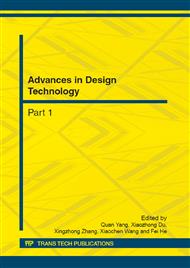
Based on 3D steady and incompressible Navier-Stokes equation and standard k-ε turbulent model, numerical calculation for the aerodynamic properties of EMU (Electric Multiple Units) CRH3 (China Railway High-Speed 3)running in crosswind were carried out by finite volume method. Aerodynamic performances of EMU CRH3 were analyzed and compared, when the EMU was running in different speed and under the crosswinds of different velocity. The research showed that with the change of speed of train and crosswind, the surface pressure and aerodynamic forces altered according to a certain rule. Compared with the drag, the change of lift and lateral force caused by the increase of crosswind were more serious. When the speed of train was constant of 200km/h, 250km/h and 300km/h, the drag of train increased by 26.7%, 20.4% and 19.8% respectively as the speed of crosswind increased from 12.5m/s to 30m/s, the lift of train increased by 340.7%, 331.7% and 337.1% respectively, and the lateral force of train increases by 296.3%, 266.0% and 150.2% respectively. As the speed of crosswind increases, the increase of drag caused by the acceleration of train is more serious than lift and lateral force.
You might also be interested in these eBooks
Info:
© 2012 Trans Tech Publications Ltd. All Rights Reserved
[1]
Q.K. Liu, Y.L. Du and F.G. Qiao: Train-crosswind and Strong Wind Countermeasure Research in Japan. Journal of the China Railway Society Vol. 30 (2008), pp.82-86
Google Scholar
[2]
Z.W. Zhu, W.F. Chen and Z.Q. Chen: A Survey on Wind Loads for Double-Deck Vehicle in Crosswind. Journal of National University of Defense Technology Vol. 23 (2001), pp.117-121
Google Scholar
[3]
X.B. Li, Z. Yang and J.Y. Zhang: Aerodynamics Properties of High-speed Train in Strong Wind. Journal of Traffic and Transportation Engineering Vol. 9 (2009), pp.66-73
Google Scholar
[4]
S.H. Ma and Y.J. Ma: Effects of Maximum Instantaneous Wind Velocity on the Safety of High-speed Train and its Control. Journal of Railway Engineering Society Vol. 124 (2009), pp.11-16
Google Scholar
[5]
S.Cheng: A Study on Electric Railway Train under Strong Wind. Railway Engineering (2009), pp.90-92
Google Scholar
[6]
X.T. Dong and X.P. Dang: Study on Influence of Wind Barriers on Traffic Safety of Trains under Crosswind by Numerical Simulation. Journal of the China Railway Society Vol. 30 (2008), pp.36-40
Google Scholar
[7]
H.X. Yan, J. Mao and M.G. Li: Numerical Study on the Crosswind Effects of High-speed Train. Journal of Beijing Jiaotong University Vol. 34 (2010), pp.14-19
Google Scholar
[8]
L.L. Wang, Y.G. Xu and J. Mao: Impact and Control of High Speed Train under Strong Wind. Diesel Locomotive Vol. 10 (2004), pp.5-8
Google Scholar
[9]
T. Cui and W.H. Zhang: A new Studying Method for Safety of a Train with Attitude Changing in Side Wind. Journal of Vibration and Shock Vol. 30 (2011), pp.25-29
Google Scholar
[10]
S.G. Tan, Y.B. Li and J.Y. Zhang: Train-crosswind and Strong Wind Countermeasure Research in Japan Flow Structure and aerodynamic properties of train under crosswind running in the embankment . Railway Vehicle Vol. 46 (2008), pp.4-8
Google Scholar
[11]
Z.J. Xu: Study on Capsizing Stability of EMU in Crosswind. (A Thesis Submitted for the Degree of Master of Science, Central South University, 2009).
Google Scholar


